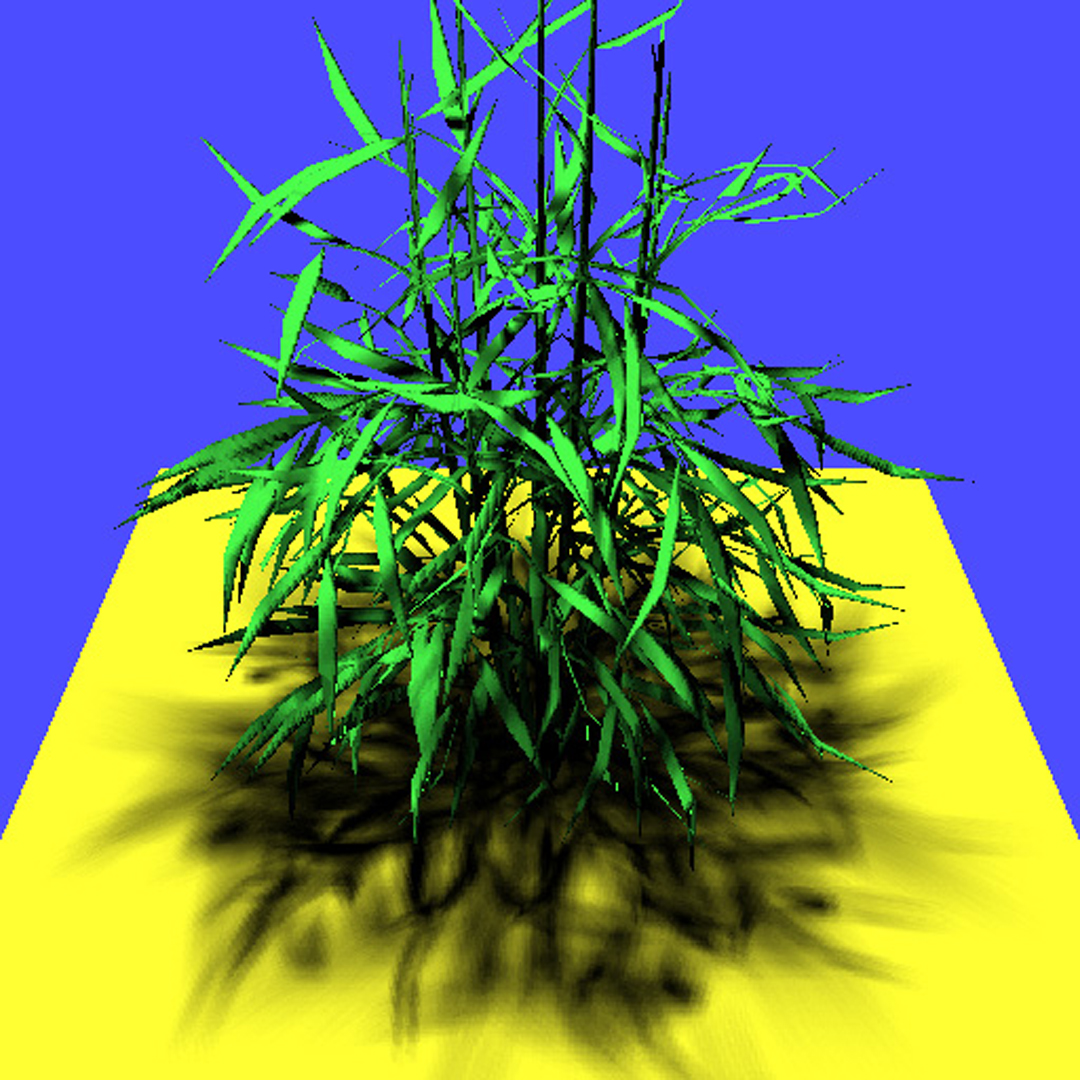“Efficient image-based methods for rendering soft shadows” by Agrawala, Ramamoorthi, Heirich and Moll
Conference:
Type(s):
Title:
- Efficient image-based methods for rendering soft shadows
Presenter(s)/Author(s):
Abstract:
We present two efficient imaged-based approaches for computation and display of high-quality soft shadows from area light sources. Our methods are related to shadow maps and provide the associated benefits. The computation time and memory requirements for adding soft shadows to an image depend on image size and the number of lights, not geometric scene complexity. We also show that because area light sources are localized in space, soft shadow computations are particularly well suited to imaged-based rendering techniques. Our first approach—layered attenuation maps—achieves interactive rendering rates, but limits sampling flexibility, while our second method—coherence-based raytracing of depth images—is not interactive, but removes the limitations on sampling and yields high quality images at a fraction of the cost of conventional raytracers. Combining the two algorithms allows for rapid previewing followed by efficient high-quality rendering.
References:
1. L.W. Chang. Combining multiple reference images in an inverse warper. M.eng. thesis, MIT, 1998.
2. S. E. Chen and L. Williams. View interpolation for image synthesis. In SIG- GRAPH 93 proceedings, pages 279-288, 1993.
3. M. F. Cohen and J. R. Wallace. Radiosity and Realistic image Synthesis. Academic Press, 1993.
4. R.L. Cook, L. Carpenter, and E. Catmull. The Reyes image rendering architecture. In SIGGRAPIt 87proceedings, pages 95-102, 1987.
5. R.L. Cook, T. Porter, and L. Carpenter. Distributed ray tracing. In SIGGRAPIt 84proceedings, pages 137-145, 1984.
6. F. C. Crow. Shadow algorithms for computer graphics. In SIGGRAPH 77proceedings, pages 242-248, 1977.
7. G. Drettakis and E. Fiume. A fast shadow algorithm for area light sources using backprojection. In SIGGRAPH 94 proceedings, pages 223-230, 1994.
8. B. Guo. Progressive radiance evaluation using directional coherence maps. In SIGGRAPH 98 Proceedings, pages 255-266, 1998.
9. R E. Haeberli and K. Akeley. The accumulation buffer: Hardware support for high-quality rendering. In SIGGRAPH 90proceedings, pages 309-318, 1990.
10. D. Hart, R Dutre, and D. R Greenberg. Direct illumination with lazy visibility evaluation. In SIGGRAPIt 99 proceedings, pages 147-154, 1999.
11. R Heckbert. Discontinuity meshing for radiosity. In Eurographics Rendering Workshop 92 proceedings, pages 203-226, May 1992.
12. R Heckbert and M. Heft. Simulating soft shadows with graphics hardware. Technical Report CMU-CS-97-104, Carnegie Mellon University, 1997.
13. A. Heirich and L. Moll. Scalable distributed visualization using off-the-shelf components. In Symposium on Parallel Visualization and Graphics, pages 55- 60, 1999.
14. B. Keating and N. Max. Shadow penumbras for complex objects by depthdependent filtering of multi-layer depth images. In Eurographics Rendering Workshop 99 proceedings, 1999.
15. S. Laveau and O. Faugeras. 3D scene representation as a collection of images and fundamental matrices. Technical Report 2205, INRIA, February 1994.
16. D. Lischinski and A. Rappoport. Image-based rendering for non-diffuse synthetic scenes. In Eurographics Rendering Workshop 98proceedings, pages 301- 314, 1998.
17. D. Lischinski, F. Tampieri, and D. R Greenberg. Discontinuity meshing for accurate radiosity. IEEE Computer Graphics and Applications, 12(6):25-39, November 1992.
18. R.W. Marcato, Jr. Optimizing an inverse warper. M.eng. thesis, MIT, 1998.
19. W. R. Mark, L. McMillan, and G. Bishop. Post-rendering 3D warping. In Michael Cohen and David Zeltzer, editors, 1997 Symposium on interactive 3D Graphics, pages 7-16, April 1997.
20. L. McMillan. An image-Based Approach to Three-Dimensional Computer Graphics. Phd thesis, Department of Computer Science, University of North Carolina, 1997.
21. L. McMillan and G. Bishop. Plenoptic modeling: An image-based rendering system. In SIGGRAPH 95 Proceedings, pages 39-46, 1995.
22. F. K. Musgrave, C. E. Kolb, and R. S. Mace. The synthesis and rendering of eroded fractal terrains. In SIGGRAPH 89proceedings, pages 41-50, 1989.
23. W. T. Reeves, D. H. Salesin, and R. L. Cook. Rendering antialiased shadows with depth maps. In SIGGRAPH 87proceedings, pages 283-291, 1987.
24. M. Segal, C. Korobkin, R. van Widenfelt, J. Foran, and P. E. Haeberli. Fast shadows and lighting effects using texture mapping. In SIGGRAPH 92 proceedings, pages 249-252, 1992.
25. J. W. Shade, S. J. Gortler, L. He, and R. Szeliski. Layered depth images. In SIGGRAPH 98proceedings, pages 231-242, 1998.
26. C. Soler and F. X. Sillion. Automatic calculation of soft shadow textures for fast, high-quality radiosity. In Eurographics Rendering Workshop 98 proceedings, pages 199-210, 1998.
27. C. Soler and F. X. Sillion. Fast calculation of soft shadow textures using convolution. In SIGGRAPH 98 proceedings, Computer Graphics Proceedings, Annual Conference Series, pages 321-332, 1998.
28. M. Stark, E. Cohen, T. Lyche, and R. F. Riesenfeld. Computing exact shadow irradiance using splines. In SIGGRAPH 99 proceedings, 1999.
29. A.J. Stewart and S. Ghali. Fast computation of shadow boundaries using spatial coherence and backprojection. In SIGGRAPH 94 proceedings, pages 231-238, 1994.
30. L. Williams. Casting curved shadows on curved surfaces. In SIGGRAPH 78 proceedings, pages 270-274, 1978.
31. A. Woo. Graphics Gems iii, chapter The Shadow Depth Map Revisited, pages 338-342. Academic Press, 1992.
32. A. Woo, R Poulin, and A. Fournier. A survey of shadow algorithms. IEEE Computer Graphics and Applications, 10(6): 13-32, November 1990.
33. H. Zhang. Forward shadow mapping. In Eurographics Rendering Workshop 98 proceedings, pages 131-138, 1998.




